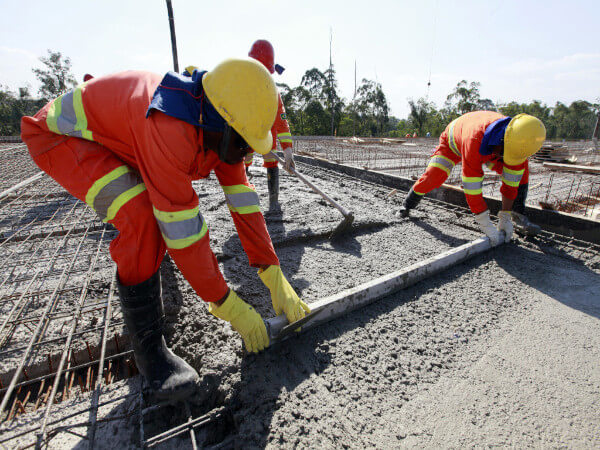
If you’ve ever walked along a shoreline or under a bridge, chances are that you’ve seen what’s called rip rap
This rocky material is a form of crushed limestone that comes in a range of sizes. It can be anywhere from 4 inches to over 2 feet in width, depending on how fast the surrounding water moves and the steepness of the slope that it will be placed upon.
What Does Rip Rap Do?
The main purpose of rip rap is to prevent erosion on a pond bank, hill, or slope. Without this protection, roadways wash out, bridges become compromised, and property gets lost.
However, erosion prevention is not its only benefit.
Contractors prefer rip rap because of its extreme durability and natural appearance. The reliability and affordability of this material make it the ideal choice for protecting bridges, pilings, shorelines, and streambeds from damage caused by water and ice.
Rip rap also buffers the impact of waves crashing against the shore and the force of water against the bank. In these cases, a larger grade (like our #1x4G) is installed over a textile for ultimate protection.
Where Can Rip Rap be Used?
Rip rap is most useful to structures or shorelines that are continuously exposed to rushing water. For example: near a bridge that’s located alongside an embankment, adjacent to waterway supports, and along a lake shoreline or the outer bank of a river bend.
It can also be used to build low-lying dividing walls or planting areas. In really steep slopes or high drainage areas, wire mesh or chain link is needed at the base of the decline to hold the rip rap in place.
At Port Aggregates, we offer three types of rip rap:
10lb rip rap (6-10”)30lb rip rap55lb rip rap
Regardless of whether you’re looking to prevent bridge erosion or simply trying to build a garden, we’ve got you covered. Our high-quality crushed limestone is available in a variety of shapes and sizes to meet your unique needs. Contact Port Aggregates today to request a quote
The post Rip Rap: The Original Rock Wall appeared first on Port Aggregates.
Did you miss our previous article…
https://www.bellanovatravel.net/?p=77
